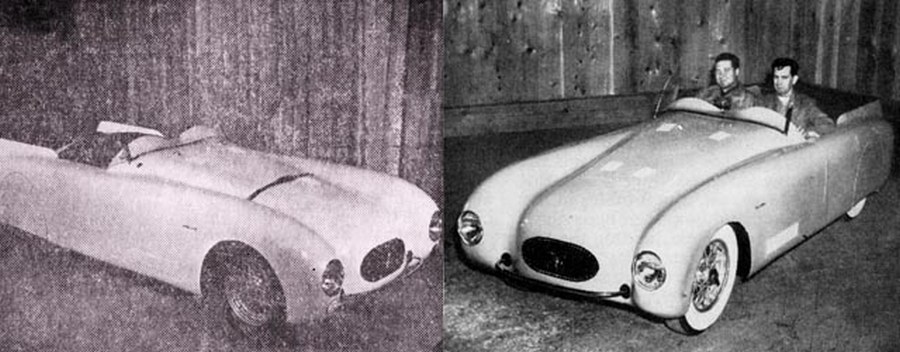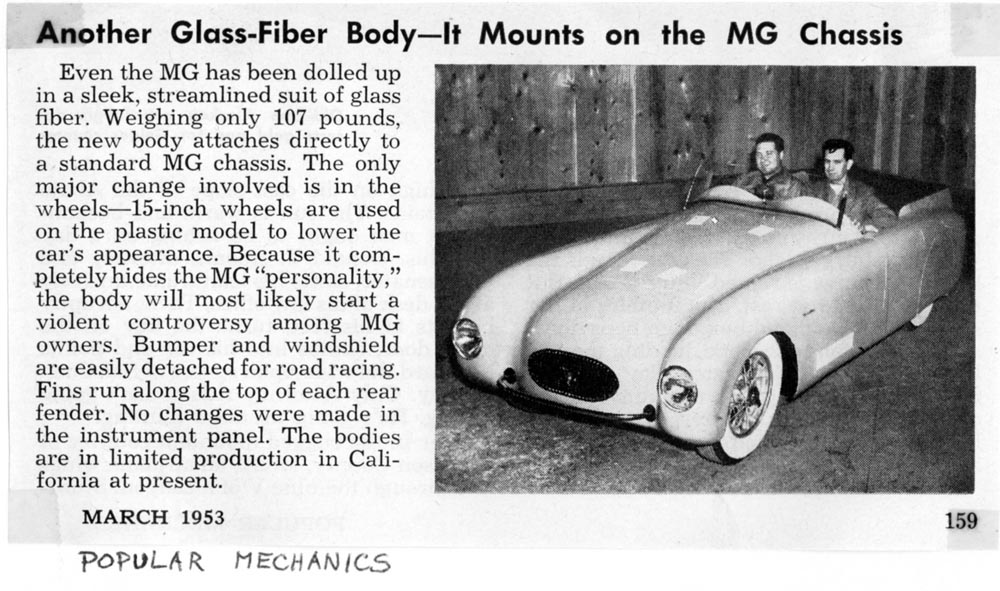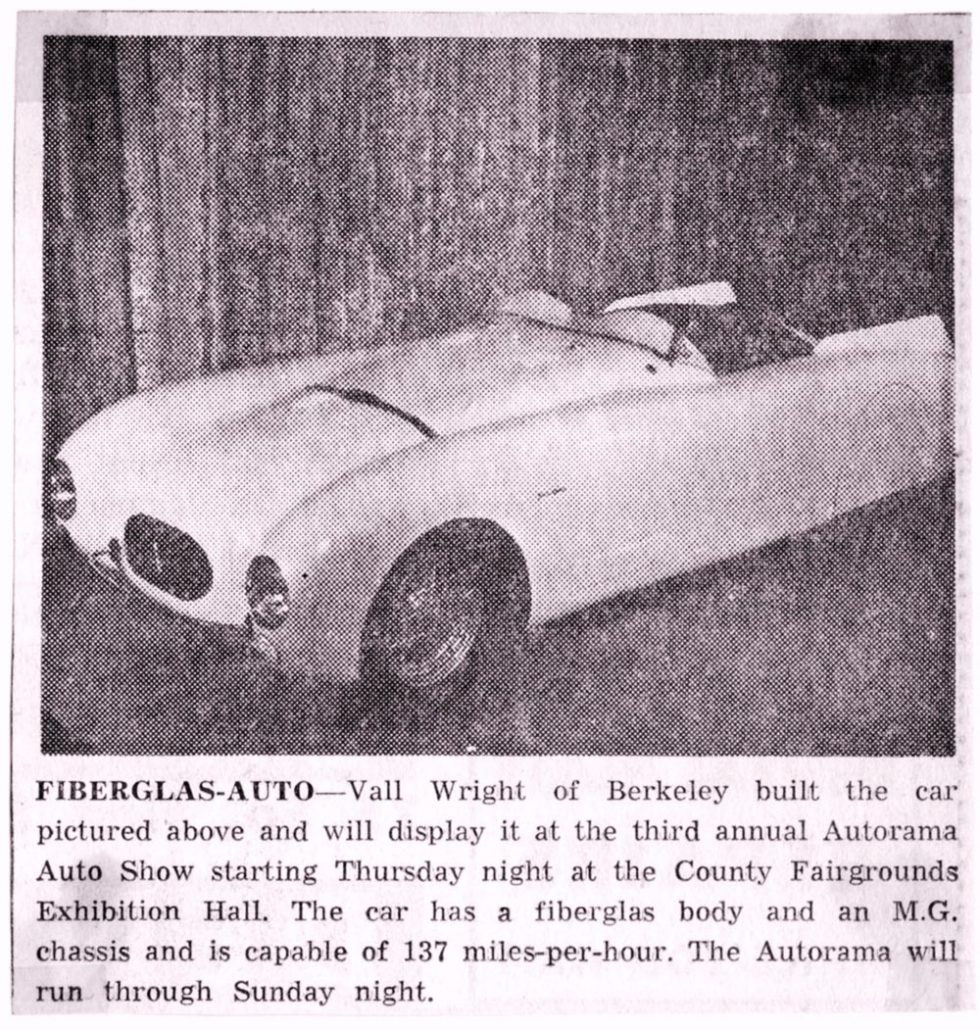
Hi Gang…
Alden Jewell’s dedication for collecting automotive history and literature isn’t a recent endeavor – he’s been doing it all his life. And I couldn’t have been more excited to meet him when good friend Bob Cunningham made the introduction several years back.
For not only have I made an excellent friend – which is the best part of this hobby. I’ve continued to learn far more than I could have imagined from Alden’s collection of automotive history not just in our niche area of limited production sports cars but into all areas of automotivedom…(is that a word?)
Today’s article focuses on two newspaper/magazine clippings about the 1952 Vale sports car – clippings Alden did back in the day in 1953. Let’s see what each had to say.
Another Glass-Fiber Body – It Mounts on the MG Chassis
Popular Mechanics: March 1953
Even the MG has been dolled up in a sleek, streamlined suit of glass fiber. Weighing only 107 pounds, the new body attaches directly to a standard MG chassis. The only major change involved is in the wheels – 15 inch wheels are used on the plastic model to lower the car’s appearance.
Because it completely hides the MG “personality,” the body will most likely start a violent controversy among MG owners. Bumper and windshield are easily detached for road racing. Fins run along the top of each rear fender. No changes were made in the instrument panel.
The bodies are in limited production in California at present.
Fiberglass Auto
San Jose Mercury News: 1953
Vale Wright of Berkeley built the car pictured above and will display it at the third annual Autorama Auto Show starting Thursday night at the County Fairgrounds Exhibition Hall. The car has a fiberglass body and an MG chassis and is capable of 137 miles per hour. The Autorama will run through Sunday night.
Summary:
So…we have some great new features showing the Vale and the tension mounts as good friend Marshall Foxworthy – great fiber adversary and friend – and I continue our dedicated search on locating one of these fibergems from yesteryear.
Who will be the first to find the missing 1952 Vale? Marshall, Geoff, or you? As long as we find one out there….all of us are winners in the history of fiberglass sports cars.
Hope you enjoyed the story, and until next time…
Glass on gang…
Geoff


Pingback: URL
Since I own a 1952 MG TD, I can say that the claim of 137 mph, even with the sleek body, is very, very optimistic. From 1939 through mid 1954 MG’s used the XPAG engine, rated at 54.4 HP. These could be modified to give in the range of 65 – 70hp, but needed a supercharger to get more power than that. The stock axle ratio was eith 4 7/8:1 in the TC or 5 1/8:1 in the TD, giving a top speed of 77 mph in the stock body with ‘unfortunate” aerodynamics. With a gear ratio change and the slicker body, I would guess 85-90 mph as a top speed. The stock MG weighed 1800 lbs, so this body probably took it down to about 1500, also improving top speed and accelration. The other change is the wheels. The TC used 19×4.50 tires or could be ordered with 16 inch wire wheels. The TD used 15×5.50 tires, but wires were never offered. The result is that I think this Vale is sitting on a TC chasis and not a TD, so it has the slightly higher rear axle ratio and the wire wheels. You can put 15″ wires on a TC, but that changes your rear drive ratio and lowers the top speed unless you also increase the tire size. Still, the Vale was a good looking car for its day and would certainly have provided a good boost for the MG’s top speed and acceleration – just not 137 mph. – Ray
Ray:
I have three MGTDs: one that is street stock (ground-up restoration, including a change to a 4.30:1 rear axle ratio; one that is vintage prepared (including dyno sheets showing 114.7 BP!); and the third is the basis for a second vintage racer, but built with a LaDawri Sebring body–about 100 pounds or so). This third car will compare most closely with the Vale subject.
Now I agree 100% with you that the metallurgy and race engine-building techniques of today are far and away better than that available in the ’50s (today we have XPAG race engines producing 135 BHP and above–using alloy pistons, stainless forged rods, billet forged cranks, external oil pumps, roller cams, etc, etc), I do believe that 137 mph might.. and I emphasize MIGHT be possible back in the day… I am essentially recreating the first Sebring that Len Dawes (LaDawri) built, but in race form. You can be sure that I will get top speed readings from tracks like Watkins Allen (front straight), in order to see the car’s potential…
Jeff Brown